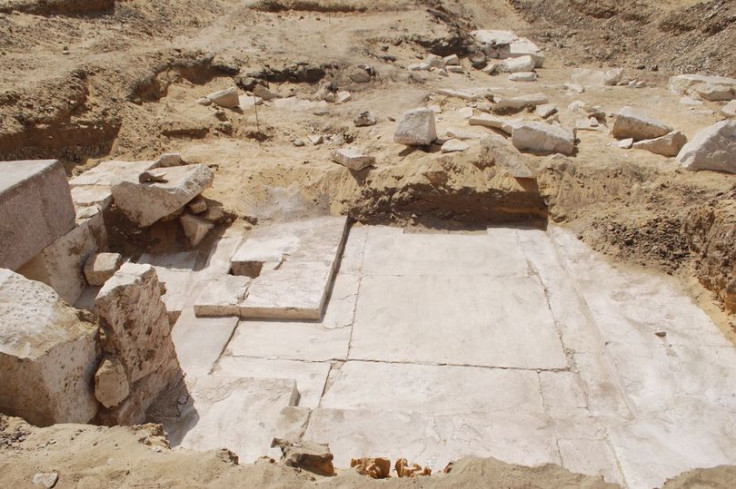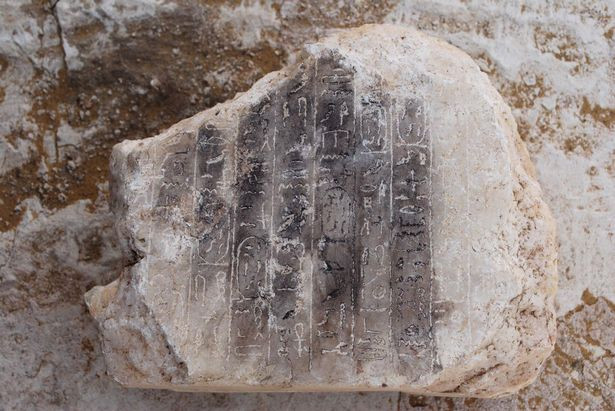That 'new' ancient Egyptian pyramid was probably already excavated 60 years ago
The remains of the pyramid were discovered at the Dahshur royal necropolis.
Archaeologists working at the Dahshur royal necropolis south of Cairo have discovered the remains of a pyramid built 3,700 years ago – at the time of the 13<sup>th dynasty of Egypt.
The Antiquities ministry announced that a long interior corridor and a block engraved with 10 hieroglyphic lines had been found, in a good state of conservation. The inscriptions might shed a light on the story of the pyramid.
Archaeologists will now continue to excavate the structure to find out more about just how big it might have been and for which king it was built.
How important a discovery is this?
For Egyptologists, the discovery is very interesting but not entirely surprising.
"People may be a little surprised that we are only now discovering a new pyramid. They may wonder how we could have missed such a huge structure. But it's important to point out that archaeologists usually don't find the top of the pyramids, but their foundations – and that's what happened here", Michael Oakey, vice-chairman of Sussex Egyptology society said.
"Stones that make up the superstructure were sometimes carted off to be used in other buildings in Pharaonic times, or centuries later, so many pyramids are not visible anymore. That being said, we know that there are other pyramids from the 13<sup>th dynasty at Dahshur, so it does not come as a complete surprise".

Some egyptologists hypothesise that this may not be a completely new find. In the 1950's, a pyramid had been excavated in the same area. It is possible that this is the same pyramid, and that it has just been rediscovered.
"Even if that is the case, it's still an interesting discovery, because we had lost all traces of this pyramid and we will now be able to learn a lot from it", Dr Kate Spence, Senior Lecturer in Egyptian Archaeology at the University of Cambridge told IBTimes UK.
Who was the pyramid built for?
The pyramids were tombs built for kings, and the priority here will be to determine which pharaoh this one was built for. This is particularly difficult, because the 13th dynasty is often considered as a time of transition for Egypt. Centralisation of Egyptian power was breaking down and Egypt was not necessarily ruled as a whole by one king.
If this is indeed the same pyramid as the one discovered in the 1950's, it may have been the tomb of a king called Ameny-Qemau.
"He was a king of the early Thirteenth Dynasty and likely ruled sometime around 1775 - 1750 BCE. His pyramid was found at Dahshur by Charles Arthur Muses, but no excavation report ever appeared. I assume that it is the same pyramid that has been rediscovered", Dr Kim Ryholt, Professor of Egyptology at the University of Copenhagen told IBTimes UK.
"Muses found fragments of the so-called canopic jars of the king where his intestines, removed from the corpse during mummification, had been stored. As far as it is known, he found no other remains of the burial nor any other inscriptions".

What does the discovery tell us about the 13<sup>th dynasty of Egypt?
The 13th dynasty of Egypt during the Middle Kingdom, is a period of Ancient Egypt's history that remains poorly documented. Many kings seem to have succeeded each other and to have had very short reigns.
Although these rulers were not able to build up pyramids on the same scale as before, this discovery suggests they still continued with the practice. This pyramid is beautifully constructed and would have been quite big despite being built in that period.
"We know that the pyramid was built as a tomb for a king whose ka, or soul, would escape the pyramid at death to either become a star in the night sky, sail in the sun boat with the solar god Re, or live in the Underworld with the god Osiris. The 13th Dynasty was not a time of strong royal control, but with this discovery suggests that kings still maintained the tradition of pyramid building", Dr Joyce Tyldesley, Senior Lecturer in Egyptology at the University of Manchester said.
© Copyright IBTimes 2024. All rights reserved.






















